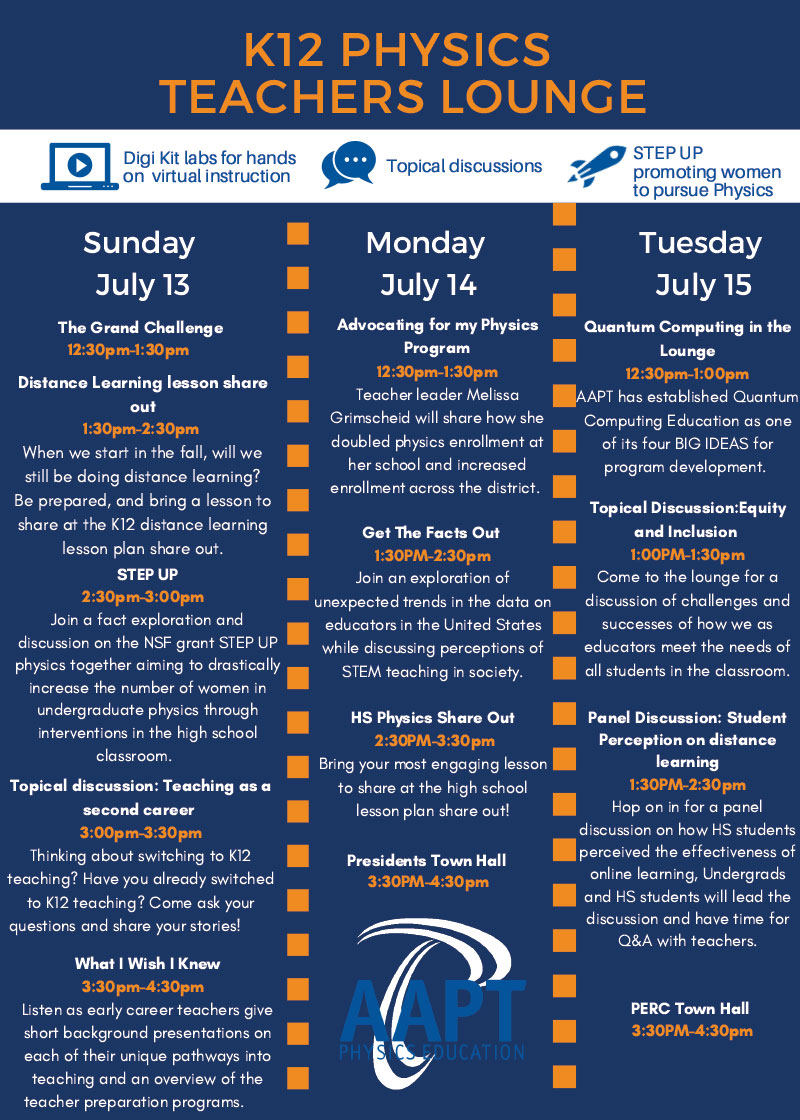How to Make the Most of a Virtual Physics Conference
Fall
2020
Meeting Notes - SPS Reporters at Science Conferences
How to Make the Most of a Virtual Physics Conference
Ben Petkie, 2020 SPS Intern, American Association of Physics Teachers
I am nervous. With only a few minutes left until my presentation begins, my mind is racing about how well I’ll be able to present online. And then… my Wi-Fi dies. I can't present, let alone be nervous about it!
This summer I worked with the American Association of Physics Teachers (AAPT), which aims to spread physics knowledge and pedagogy around the country, and STEP UP, a movement that provides resources for high school teachers to encourage young women to study physics and increases awareness of inequality in the physics community. I was lucky enough to work on both the AAPT conference and the STEP UP Summit, both of which were virtual. Based on these experiences, I’d like to share some thoughts on attending and running a virtual conference.
AAPT’s Virtual Summer Meeting was hosted with Underline.io, which is easy to navigate and allows participants to view all of the talks via a master list. This is one benefit of the virtual platform—you have a lot more control over what to watch or participate in because it’s easy to plan. You can also create “ads” for the conference (one of which I made) to promote certain talks. These help attendees because they can get a lot of information from one small ad on the page.
During a virtual conference, anxiety is way down for attendees. Not only can they avoid travel, but they also have complete control over their experience. This isn’t necessarily true for those hosting. Nobody at AAPT or STEP UP had ever designed an online conference. Communication with the hosting service can be time consuming, and online communication and meetings don’t allow for the same level of understanding as in-person gatherings.
As the meeting approached, so did a big decision: Do we ask speakers to present live or present a recording and have a live Q&As? When preparing for a virtual presentation, speakers need to ensure quality internet connection. If one were to get disconnected during a plenary, it would leave a few hundred people sitting at home looking at a blank screen. The AAPT meeting took advantage of the ability to have plenary speakers record their talks and paired them with live Q&As to really make it feel like you were engaged with the speaker.
There were also “virtual conference rooms” using Gather.town, where attendee avatars could walk around the room to mingle with others. It was a great place to take a break, and it also made the experience feel a lot more like an in-person conference. So, when attending a large virtual meeting, try to take advantage of the increased planning ability and comfort, and treat it like you would an in-person conference by visiting those virtual rooms!
But how do people interact virtually? And how do hosts run breakout rooms? Both conferences made use of having designated roles for participants in each talk or breakout room, including tech support, note taking, and watching for raised hands. It’s obviously easy to just turn off your webcam and get distracted. To increase group interaction, you might try having attendees contribute their thoughts to a shared note page instead of having one person taking notes. This is easy to do virtually: Just share a Google doc!
After a lot of hard work, the meeting was all set up—but how to get the word out? This was extremely important, as we expected attendance would be lower for a virtual meeting. Social media, therefore, was an important tool to drive attendance. We designed posts, videos, and emails to send out to those planning to attend. We attempted to show attendees what to expect in order to lower anxiety and boost attendance.
This isn’t the way we usually plan for conferences, but we learned that the virtual platform had both drawbacks and benefits. In the end, it’s important to take advantage of what virtual meetings have to offer. Because of how well they can be run, I wouldn’t be surprised to see them continue even after the COVID-19 pandemic has passed.

